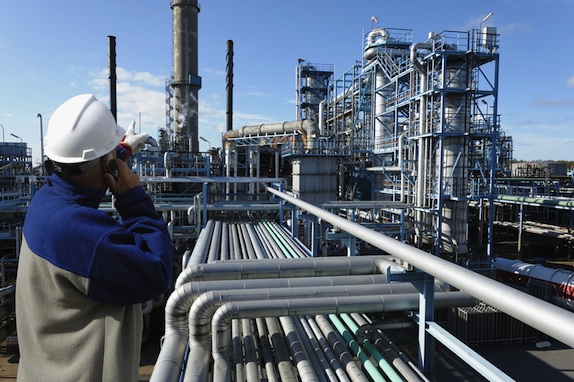The Process Plant Safety Symposium (PPSS) is one of six parallel tracks that comprise The Global Congress on Process Safety (GCPS). Organized by volunteers from industry and academia, the PPSS conference focus is to provide proven best practices, perspectives, methods and tools that can be readily practiced and provide value to personnel at the plant level.
PPSS Chair
-
Frederick Gregory, PPSS_chair@aiche.org
Session Topics:
- Identifying Hazards – Practical Approaches and Techniques
- Practical Facility Siting Practices
- New Ideas in Process Safety
- Equipment Reliability and Inspection Practices
- Human Reliability and Performance
- Independent Protection Layers and Other Safeguards
- Natural Disaster Planning – Shutdowns, Startups, and Continuing Operation
- Process Safety Culture – Working Through a Transformation
- Using Near Miss and Minor Incident Data for Process Improvement
- Case Histories (GCPS Joint Session)
Identifying Hazards – Practical Approaches and Techniques
The first step in making a chemical facility safer is to identify the hazards out there! This session will explore ways to identify hazards such as chemical compatibility, vent sizing concerns, chemical storage location, poor equipment access, relief valve discharge location, emergency egress, traffic patterns, and more. Once identified, hazards can then be prioritized and addressed on this prioritized basis.
Practical Facility Siting Practices
Facility siting has recently been identified as an area that needs significant improvement in the chemical industry. This session will provide guidance on best practices, such as whether it is better to have remote control rooms, or control rooms in the unit but fortified for blast resistance. The session will also review best locations for other occupied buildings, chemical storage, emergency access and personnel egress. The goal is to review practical options for improving chemical plant facility siting.
New Ideas in Process Safety
The goal of this session is to look at new technologies and practices in process safety. The topics may be quite varied, such as use of wireless technology for process monitoring, big data use for optimization and hazard recognition, safety instrumented system architecture changes, or more reliable field instrumentation.
Equipment Reliability and Inspection Practices
This session will focus on improving equipment reliability and getting the most benefit from equipment inspections. This session will be a review of recommended inspections and inspection intervals for chemical process equipment as well as methods to optimize inspection frequency based on industry standards and findings from previous inspections. This session will look at risk-based methods to manage equipment inspection deferrals and ways to manage equipment inspections to meet safety requirements as well as minimize resource requirements.
Human Reliability and Performance
For human reliability and performance, we look at interaction between a plant operator and the equipment with the goal of minimizing human errors and more importantly, the consequences of human error. Topics can include improved control system layout and graphics, better procedure writing techniques, system design for ease of operation, and instrumentation improvements to provide better feedback to the operator.
Independent Protection Layers and Other Safeguards
Management and verification of independent protection layers is a critical task that is often not given adequate focus in chemical facilities. This session will look at best practices for identification, maintenance, and verification of independent layers. These can vary from Safety Instrumented System proof testing to a weekly check of tattletale gauges for verification of rupture disk integrity. Equally as critical is follow-up and root cause evaluation of protection layer failures during inspection or following an incident. Included would be a discussion of what constitutes an independent protection layer and how much credit can be taken for a given layer.
Natural Disaster Planning – Shutdowns, Startups, and Continuing Operation
Following Hurricane Harvey on the Gulf Coast last year, many companies are looking for better ways to manage hurricane response. This session will look at key decision points leading up stopping operations, or perhaps to continue operating through a storm. The session will also look at planning well in advance of an event as well as post-disaster recovery efforts. Also included here would be a review of nature induced common cause failures that may not have been considered such as area flooding, wind, or tornado damage.
Process Safety Culture – Working Through a Transformation
When improving process safety, many sites face cultural barriers. Employees are naturally resistant to changing practices that have been done for years, especially when no incidents have occurred as a result. Instilling a sense of vulnerability and recognition of deficient practices can be very challenging for legacy sites. This session will look at best practices and ways to manage a workforce transformation to improve process safety.
Using Near Miss and Minor Incident Data for Process Improvement
Many facilities log near miss and minor incident data, but how many use this valuable information to guide their process safety improvement program? Major process safety events are relatively rare and not usually a reliable way of determining where safety improvements are needed most. This session will look at best practices for organizing near miss and minor incident data, and then using that data to identify gaps in a site’s existing process safety program.
Case Histories (GCPS Joint Session)
Reviews of process safety incidents provide valuable learning opportunities. This session invites papers to help understand the causes and lessons learned from incidents in the industry with an emphasis on events that have helped define and develop the process safety field over the years.

